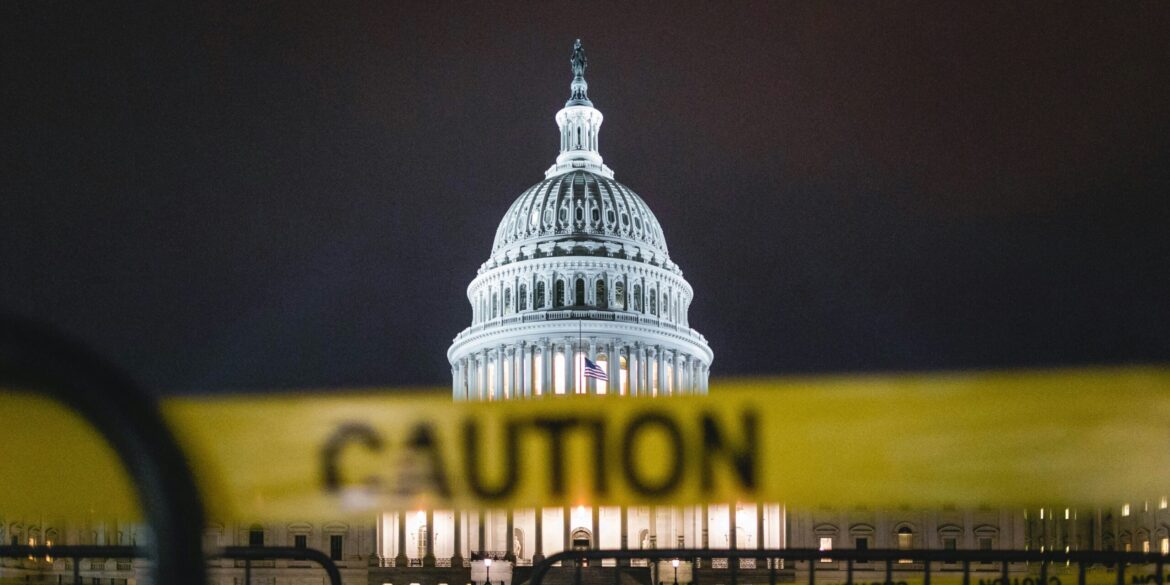On September 29, 2025, the United States government officially entered a shutdown, marking the latest in a series of political standoffs over government funding. The shutdown resulted from failed negotiations between President Trump and congressional leaders, particularly after the Senate Democrats rejected a proposed stopgap funding bill. With no agreement reached on funding measures, the federal government was forced to halt many of its operations, affecting a wide range of services and employees across the country.
The political deadlock that led to the shutdown reflects the growing divisions between the Republican-controlled Senate and the Democratic-controlled House. President Trump had pushed for a temporary funding measure that included provisions favored by Republicans, but Senate Democrats refused to support it, insisting that any funding agreement should not include conditions they viewed as politically divisive. This standoff is not new, as the U.S. has seen similar funding disputes in recent years, but the current shutdown carries unique implications for both federal operations and the broader political landscape.
The immediate consequences of the shutdown are far-reaching. Federal employees are among the first to feel the effects, with non-essential workers furloughed and essential staff, such as those in the military and law enforcement, required to work without pay. This leaves many workers uncertain about when they will receive their next paycheck, creating financial strain for individuals and families who depend on government salaries. The disruption also extends to various federal agencies and services, which will experience delays or outright shutdowns. National parks, museums, and public monuments have closed their doors, frustrating tourists and citizens alike who rely on these public resources. Many vital services, such as processing of passports, visas, and other government-related paperwork, have been put on hold, leading to significant delays.
Federal programs critical to millions of Americans are also affected by the shutdown. Social Security benefits and healthcare services for veterans and low-income individuals will continue, but there are concerns that even these programs could face delays or operational issues as the impasse drags on. In particular, public health services, including research and disease control, may experience interruptions that could have long-term effects on the nation’s healthcare system.
Another significant consequence of the shutdown is its impact on the private sector. Federal contractors and businesses that rely on government contracts are left in limbo, with many facing financial uncertainty due to halted or delayed government projects. The economic ripple effect of a prolonged shutdown could be severe, especially as small businesses and workers tied to federal funding may struggle to stay afloat.
As the shutdown continues, the pressure mounts on both President Trump and Congress to resolve the funding impasse. With neither side willing to back down, the chances for a quick resolution appear slim. President Trump remains firm in his position, while many Democrats call for a clean funding bill, free of any controversial political provisions. The lack of cooperation leaves the American public frustrated and uncertain about how long the shutdown will last and what steps will be taken to address the underlying issues causing the gridlock.
The political division that led to the current shutdown is emblematic of a broader problem facing the U.S. government in recent years. As funding negotiations continue to stall, the specter of government shutdowns has become a recurring issue in American politics, undermining the public’s trust in the government’s ability to function effectively. The prolonged nature of these standoffs has created an environment of uncertainty, where the public is left to navigate the consequences of a government that cannot operate at full capacity.
At the heart of the shutdown lies a deepening divide between political parties, making it increasingly difficult to find common ground. With each side entrenched in their positions, the possibility of a lasting compromise seems remote. As the shutdown drags on, Americans across the nation are feeling the strain of a government unable to meet their needs. The future remains uncertain, but one thing is clear: the shutdown is a stark reminder of the ongoing challenges of bipartisan cooperation and the fragile state of U.S. governance.

